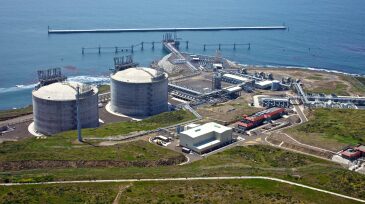carbon emissions
-
The LNG carbon-credit plan is just part of the operator’s overall ambition to be a net-zero company by 2050 or sooner.
-
Shell signed a 5-year contract to supply PetroChina with carbon-neutral LNG using carbon credits to offset emissions from Shell’s own emission-reduction project portfolio.
-
We need to analyze the carbon intensity of reserves, the potential emissions that are in front of us, not just the carbon intensity of current operations. An engineering solution associated with production forecasts over time offers a framework for thinking through the carbon-emissions issue.
-
Experts from around the world highlight that, while natural gas has an important role to play in the energy transition, it is one that changes from region to region.
-
The planned LNG export facility will host a large carbon capture and storage project to enable the permanent geologic storage of more than 5 million tonnes of carbon dioxide per year.
-
The carbon tax endorsement was just one part of a broader plan the group said will be required to combat climate change.
-
The partnership aims to speed up the decarbonization of seven global industries representing 30% of global emissions, which include steel, trucking, shipping, chemicals, cement, aluminum, and aviation.
-
Senior oil and gas professionals see hydrogen as a significant part of the global energy mix by 2030.
-
In the US Energy Information Administration’s Annual Energy Outlook 2020 reference case, which assumes no new laws and regulations, US energy-related carbon dioxide emissions decrease through the early 2030s before increasing to 4.9 billion metric tons in 2050.
-
Equinor Technology Ventures and OGCI Climate Investments have agreed to back the tech developer, which integrates its SeekIR miniature gas sensors onto drones to detect, localize, and quantify carbon emissions.









